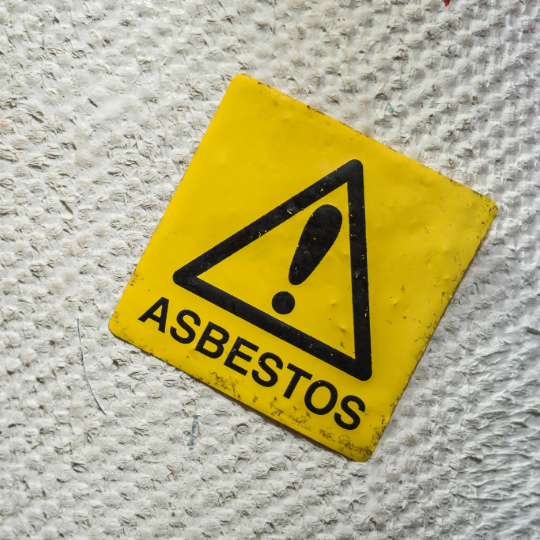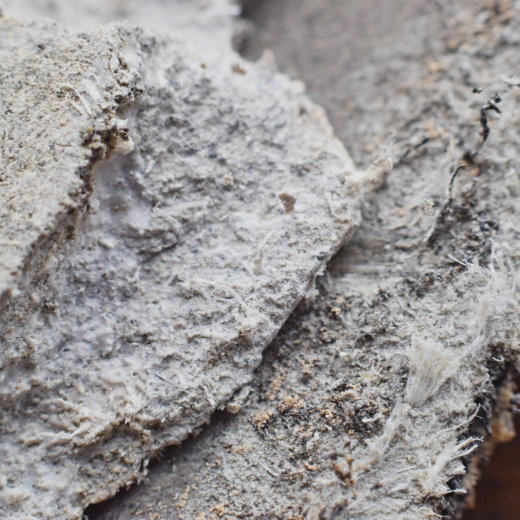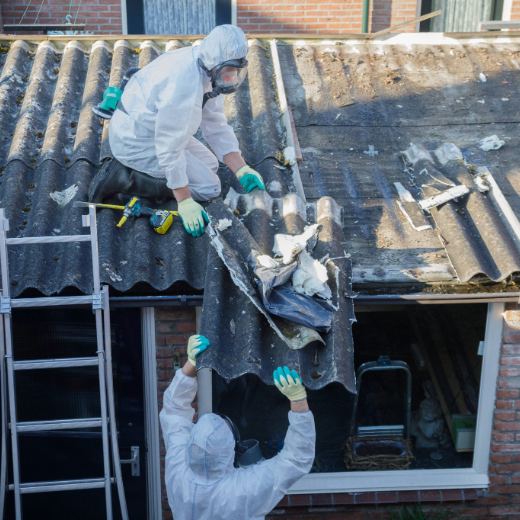

An introduction to asbestos safety
Once hailed as a miracle material due to its fire-resistant properties and versatility, asbestos has since been revealed as the silent killer that is present in countless buildings across the UK, posing a significant threat to the health and safety of occupants if damaged or disturbed.
In today’s guide, we’ll be delving into the fundamentals of asbestos safety, covering everything from the origins of asbestos, to the identification, management and removal of the material.
What is asbestos?
We tend to talk about asbestos as though it were a single, harmful material. In actuality, asbestos is a generic, umbrella term referring to a group of around six different naturally occurring minerals. These minerals crystallise to form fibres that are incredibly strong and durable; they do not dissolve in water, nor do they evaporate, and they are also resistant to heat, fire, chemical corrosion and biological degradation.
The primary minerals found in asbestos fibres are: actinolite, amosite, anthophyllite, chrysotile, crocidolite, and tremolite. Generally speaking, asbestos can be divided into two sub-classifications; serpentine and amphiboles, with Chrysotile (also known as white asbestos) and Amosite (also known as brown asbestos) being the most commonly used in the UK.
The fibres of serpentine, or white, asbestos are soft and incredibly flexible, and they also happen to be considerably less hazardous than amphibole asbestos, which has brittle, needle-like fibres.
What was asbestos used for?
The remarkable resistance of asbestos to heat, fire, and chemicals, along with its general mechanical strength, made asbestos fibres a staple additive in thousands of products across a variety of industries, including construction, shipbuilding, and the automotive sector.
The use of asbestos was most commonly employed in insulation materials for buildings, boilers, and pipes; cement for roofing sheets and pipework; car brakes and floor tiles; and insulating, fire-resistant boards for ships and buildings.
Where can asbestos still be found?
Asbestos was incredibly prolific from the late 19th century onwards. However, once the health risks were identified, the importation of blue and brown asbestos was banned in the UK in 1985, and this ban was extended to cover white asbestos in 1999.
Unfortunately, the ban could not erase the extensive use of asbestos in industry for over a century, meaning that this harmful material can still be found in many buildings that were constructed before the ban was imposed. As such, this material still lurks in insulation, flooring, roofing materials, and even decorative elements like textured coatings and vinyl tiles.

What are the risks?
Despite its remarkable properties, asbestos poses incredibly severe health risks when its fibres become airborne and are inhaled. In fact, according to figures from the Health and Safety Executive (HSE), asbestos-related deaths in the UK are still in excess of 5,000 every year.
Prolonged asbestos exposure can lead to a range of debilitating and often fatal diseases, including:
- Asbestosis: a chronic lung condition characterised by scarring of the lung tissue, leading to breathing difficulties and a persistent cough.
- Lung Cancer: asbestos exposure significantly increases the risk of developing lung cancer, particularly in smokers.
- Mesothelioma: a rare but aggressive form of cancer that affects the lining of the lungs, abdomen, or heart. It is almost exclusively caused by asbestos exposure.
The latency period between exposure and the onset of symptoms for these diseases can be decades, making early detection and prevention critical.
Who is responsible for managing asbestos safety in a building?
Ensuring the safety of occupants and workers in buildings where asbestos-containing materials (ACMs) are present is crucial, and falls under the responsibility of several parties, including building owners, employers, and duty-holders. The Control of Asbestos Regulations 2012 lays out specific obligations for these stakeholders, which include:
- Identifying and managing asbestos: duty-holders must conduct thorough asbestos surveys to identify the presence, location, and condition of any ACMs within their premises. Based on the findings, they must develop and implement an asbestos management plan to minimise the risk of exposure.
- Training and information: employers must ensure that workers likely to encounter asbestos during their duties receive adequate training and information on asbestos risks, handling procedures, and emergency protocols.
- Asbestos removal: where necessary, asbestos removal must be carried out by licensed contractors who adhere to strict safety guidelines and disposal regulations to prevent the spread of asbestos fibres.
Compliance with these regulations isn’t just a legal obligation, but a moral imperative to safeguard public health.

Risks around the home
While asbestos-related risks are particularly prevalent in industrial settings, this is not to say that they do not also extend to domestic environments. They most certainly do.
Because asbestos is no longer used in construction, it is in older homes and buildings that caution must be exercised, and it’s critical for DIY enthusiasts embarking on renovations or repairs to take the necessary steps to avoid disturbing ACMs inadvertently. Here are some essential tips for homeowners:
- Be vigilant: before starting any DIY project, familiarise yourself with the signs of ACMs commonly found in older properties. Recognising ACMs isn’t always straightforward, as they can be hidden behind walls or within the structure of a building, so if you are in doubt, we recommend seeking professional advice or arranging an asbestos survey.
- Take precautions: if you suspect the presence of asbestos, avoid disturbing the material and seal off the area to prevent the spread of fibres. Wear appropriate personal protective equipment (PPE), including respiratory masks and disposable coveralls.
- Call in the professionals: for larger-scale renovations, or if asbestos is clearly present, it’s important to enlist the services of licensed asbestos removal contractors, as attempting to remove asbestos yourself can pose significant risks to your health and the safety of others.
By adopting a cautious approach and prioritising safety, homeowners can mitigate the risks associated with asbestos exposure during DIY projects.
How can Henderson Environmental help with asbestos safety?
Asbestos may be a relic of the past, but its legacy continues to haunt buildings across the UK. So, whether you’re a building owner, employer, or homeowner, asbestos safety should never be taken lightly, and sometimes the best thing you can do is enlist professional help.
Here at Henderson Environmental Services Ltd, we’re committed to protecting public health and ensuring a safer environment for generations to come through our comprehensive and reliable asbestos management and removal services. Our team of licensed professionals are fully equipped with the training and knowledge necessary to safely tackle asbestos hazards, including both the removal and disposal of asbestos, as well as abatement and encapsulation where necessary.
Concerned about asbestos risks in your building? Contact us today.



